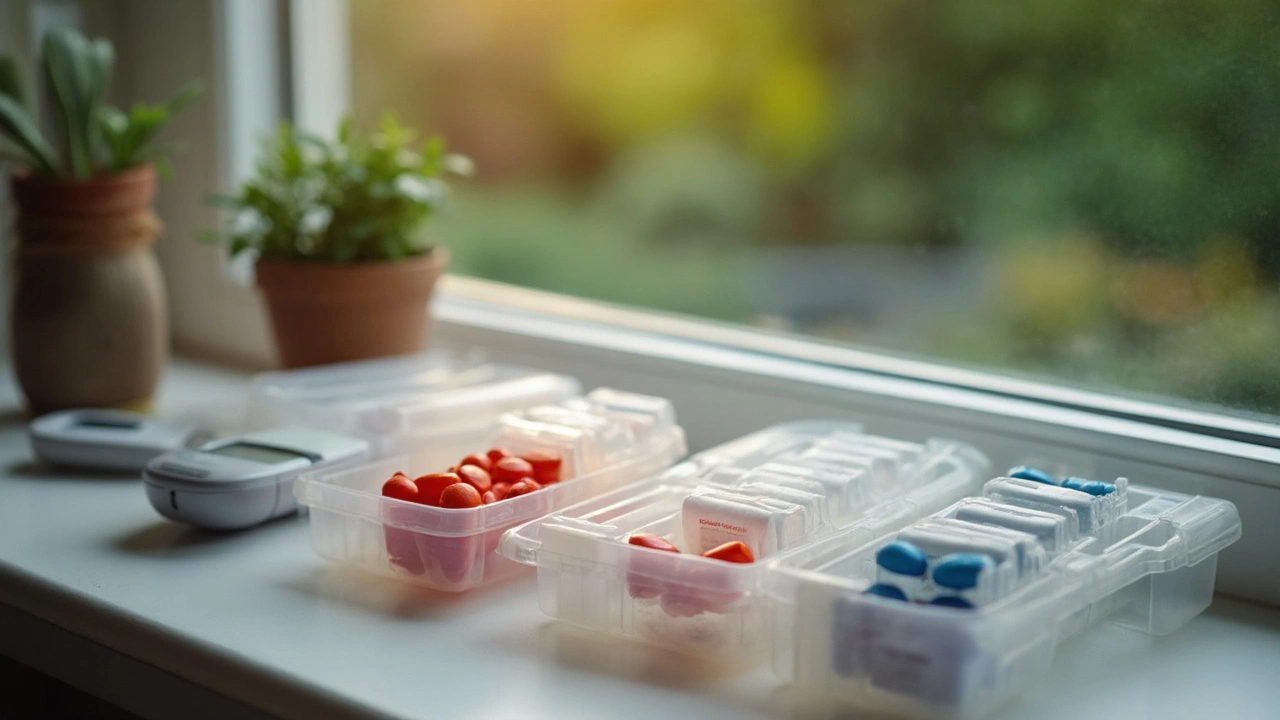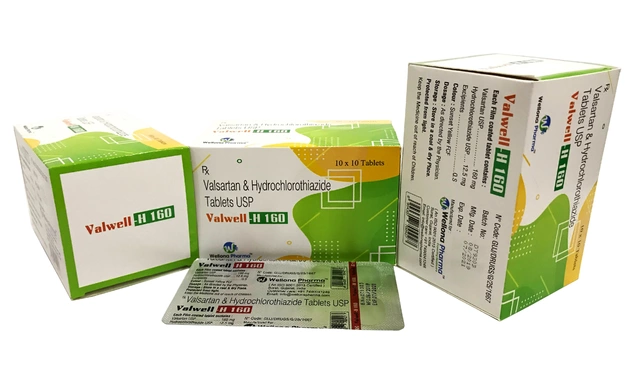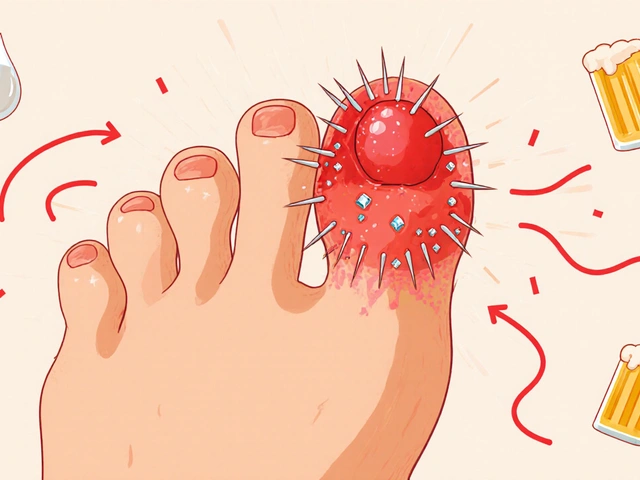Why Blood Thinners Matter So Much for Diabetics
If you live with diabetes, every tiny decision about medicine matters – and blood thinners top the list for people dealing with atrial fibrillation (AFib) or deep vein thrombosis (DVT). Diabetics aren’t just a little more likely to get blood clots. According to a 2023 Lancet study, they face double the risk of stroke compared to non-diabetics if they have AFib. Add in DVT, and it’s clear: skipping good anticoagulation isn’t just risky, it might be life-altering.
But why is this? Diabetes messes with blood vessels. High blood sugar slowly wears down arteries and veins, making blood thicker and more prone to clot. It doesn’t help that diabetes brings along friends like high blood pressure and cholesterol, both feeding the cycle. That’s why the moment someone is diagnosed with AFib, DVT, or even a history of clots, doctors start talking about anticoagulants—medicines that stop new clots from forming and existing ones from growing.
For the past 60 years, warfarin’s dominated this conversation. Seen as the trusty, if stubborn, grandparent of the blood thinner family, it’s gotten millions through post-surgery clots and chronic heart problems. Still, it’s easy to get frustrated with warfarin’s constant blood checks, food limitations (bye-bye, leafy salads), and wild swings in clotting time if you miss even a dose.
Enter DOACs: Direct Oral Anticoagulants. They're newer, promise fewer food interactions, minimal lab draws, and a predictable effect. Sounds perfect on paper, right? But diabetics are their own puzzle. The question isn’t just what’s easier—it's what’s safer and works better for people juggling both diabetes and a real risk of clots.
Choosing between DOACs and warfarin isn’t one-size-fits-all. Some diabetics glide through years on warfarin; others get fed up after a month. So what does the evidence really say about outcomes, side effects, and the fine print for diabetics specifically?
Warfarin: The Old Standard, But Not Without Risks
If you’re good at routines, warfarin rewards you. Its effect is measured by INR (International Normalized Ratio), meaning you must test your blood regularly to keep it within your safe range. Anywhere between 2 and 3 for most conditions. Miss the mark, and danger creeps in: too low means new clots could form, too high means serious bleeding. Even eating that big spinach salad can shift your INR—and that’s not even counting some antibiotics or painkillers.
For diabetics, warfarin has some unique hitches. Hypoglycemia (low blood sugar), common on certain diabetes meds, increases bleeding risk with warfarin. Also, diabetes itself makes INR levels bounce around more, so people with fluctuating blood sugars may struggle to stay in range. One lesser-known headache: diabetic kidney problems mess with how well warfarin works, sometimes making it harder to stay therapeutic.
Here's another twist. Researchers in a 2022 American Heart Association review looked at warfarin outcomes in 44,000 diabetics with AFib. They found up to 45% of patients spent time outside the ideal INR range in the first six months, especially those with poorly controlled diabetes. That translates to more ER visits and hospitalizations, usually for either bleeding or new clots.
And yet, warfarin does work well if you keep it stable. The same review showed diabetics who could stay within their INR range had stroke and clot rates nearly identical to people without diabetes. The trouble? It’s not easy. Add diet, illness, and new medications, and you get a daily balancing act that wears people down.
If this sounds familiar, you’re not alone. Doctors and patients alike have been demanding simpler, safer alternatives for years—spurring interest in DOACs. If you’re wrestling with both diabetes and warfarin’s headaches, check out more practical tips in this guide about warfarin and diabetes for everyday strategies.

DOACs: Are They Safer and Better for Diabetics?
DOACs—drugs like apixaban, rivaroxaban, dabigatran, and edoxaban—started rolling out about a decade ago. Immediately, patients loved the pitch: no regular blood draws, no INR targets, fewer food worries, and steady doses. No wonder nearly half of all new prescriptions for blood thinners in people with AFib or DVT now go to DOACs instead of warfarin. But how do they stack up for the diabetic crowd?
Let’s get specific. In 2021, a big study published in the Journal of the American College of Cardiology followed 14,000 diabetics on either a DOAC or warfarin for two years. The results: the people on DOACs had a 30% lower risk of major bleeding events and a 20% lower risk of new strokes or blood clots. That’s no small difference, especially if you’re already managing diabetes-related complications.
Why the edge? One theory is that DOACs' action is more predictable. While warfarin’s effect can change with food, booze, illness, and a hundred common meds, DOACs mostly just sit in the system and quietly do their job. That’s a relief when you’re already watching carbs, insulin, kidney function, and the rest.
Still, DOACs aren’t magic bullets. They clear from your system through your kidneys, so if you have moderate-to-severe diabetic kidney disease, doses might need adjusting—or, sometimes, doctors still choose warfarin. And you can’t just miss a dose; DOACs don’t have “buffer days” like warfarin, so skipping even one could set you up for a clot. People with certain artificial heart valves or the rarest types of clotting disorders are usually told to stick with warfarin anyhow.
The other big clincher: cost. Warfarin’s generic and cheap (often under $10/month). DOACs, even with insurance, can run hundreds per month unless you get a good deal or assistance program.
“For diabetics with decent kidney function, DOACs outshine warfarin. Less bleeding, fewer strokes, and much less hassle with labs or diet,” says Dr. Maya Goldstein, a hematologist at Cleveland Clinic. “But there’s still no one-size-fits-all answer. Some patients tolerate warfarin beautifully—others, especially those tired of blood checks, do best on the newer meds.”
One practical tip: keep a medication list on your phone and bring it to every medical visit. Even OTC drugs can affect blood thinners, but with DOACs, there are far fewer real interactions than with warfarin.
Comparing Side Effects and Special Risks in Diabetes
Bleeding is the main worry with any blood thinner. With warfarin, nosebleeds and gum bleeding show up early if you’re sensitive. Serious stuff—brain bleeds or gut bleeds—happen in about 1% of patients per year, more if your INR bounces around. DOACs statistically drop that risk: for example, apixaban nearly halves major bleeding rates compared to warfarin, especially in people over 70, a group where diabetes is even more common.
But there are tradeoffs. DOACs tend to cause less brain bleeding but can cause more GI (stomach or bowel) bleeding, particularly with rivaroxaban and dabigatran. For anyone with a history of ulcers, talk with your doctor before switching. Another twist: warfarin’s effects can be “reversed” quickly with vitamin K if bleeding does start. Only in recent years have antidotes for DOACs been widely available—and they’re still not everywhere, especially in smaller hospitals.
How about blood sugar control itself? Warfarin doesn’t usually mess directly with glucose, but hypoglycemia does worsen bleeding risk if it happens. DOACs don’t really touch blood sugar, but since they’re newer, don’t be shy to report any strange symptoms—clinical trials are good, but real-world diabetics sometimes have unique metabolic hiccups no one saw coming.
Diabetic kidney damage adds another wrinkle. As kidneys slow, both warfarin and DOACs can build up or act unpredictably. Most guidelines recommend warfarin if kidney function is severely reduced (eGFR less than 15 mL/min), but DOACs fit well for the “mildly-to-moderately” reduced range.
Is one better than the other for preventing the big dangers: stroke, heart attack, deadly clots? For most people, DOACs just edge ahead in stroke and embolism prevention, as shown in a real-world Danish database of nearly 30,000 diabetic AFib patients published in 2022. Hospitalizations dropped with DOACs, and doctors saw fewer fatal bleeds compared to traditional warfarin monitoring.
| Outcome (per year) | Warfarin | DOACs (average) |
|---|---|---|
| Major Bleeding | 2.1% | 1.2% |
| Stroke | 1.8% | 1.1% |
| GI Bleeding | 0.7% | 1.0% |
| ER Visits for Bleeding/Clots | 3.0% | 2.2% |
So if you’re wading through side effect lists, pay special attention to your history: kidney disease, stomach issues, and tolerance for regular blood testing should shape your anticoagulant pick.

What Diabetics Need to Know to Choose Safely
Real life means real tradeoffs. So what should you keep in mind—beyond stats and risk charts—when working with your doctor or pharmacist?
- Routine testing: If you’re someone who rarely wants a lab or clinic visit, DOACs are more hands-off. Warfarin requires careful and regular INR checks, which can be tiring for people with work, family, or travel obligations.
- Consistency: If you sometimes miss medications, tell your doctor honestly. DOACs have no margin for error; a missed dose increases stroke risk more than with warfarin, which has a longer effect tail-off.
- Kidney health: This matters more than you might think. A lot of diabetics have hidden kidney damage. Ask for an eGFR (kidney function) check before any anticoagulant switch.
- Medication costs: DOACs generally cost more unless you have outstanding prescription coverage or qualify for assistance. Don’t be shy about raising this with your doctor—a less expensive medicine you actually take regularly is safer than a pricey one you skip.
- Other health problems: If you’ve already had a stomach bleed or ulcer, warfarin may be smarter, as some DOACs slightly bump GI bleeding rates. If you have a mechanical heart valve, warfarin is still the rule.
- Drug+food interactions: Warfarin users need to keep vitamin K intake steady—think leafy veggies, green juices, certain teas. DOACs let you eat without worry but can interact with a few strong antibiotics or anti-seizure meds. Always check when starting something new.
The evidence keeps shifting. New studies come out every year, and as more diabetics age with AFib, options keep expanding. The best tip? Advocate for yourself, double-check your kidney labs, and make sure you always have clear written instructions for whichever medicine you’re taking.
Just because something is “new” (like DOACs) doesn’t mean it’s always the best for you, though for most diabetics with AFib or DVT, the new drugs offer genuine advantages. Don’t be afraid to push your provider for details—or even for help finding co-pay assistance programs if that’s a barrier for you.








Emma French April 30, 2025
Warfarin works if you keep it steady.
Debra Cine May 2, 2025
Great rundown! 👍 The balance between convenience and safety really matters, especially when juggling insulin and regular check‑ups. DOACs definitely ease the lab‑visit burden, but the cost factor can be a real curveball. If anyone’s looking for assistance programs, let me know – happy to share resources! 😊
Rajinder Singh May 5, 2025
The article provides an exhaustive comparative analysis of anticoagulation strategies in diabetic patients with atrial fibrillation and deep vein thrombosis. It begins by emphasizing the heightened thrombotic risk inherent to diabetes, a premise substantiated by the 2023 Lancet cohort study indicating a two‑fold increase in stroke incidence. Subsequently, the historical dominance of warfarin is outlined, highlighting its pharmacodynamic variability linked to vitamin K intake, drug interactions, and fluctuating glycemic control. The author rightly points out that hypoglycaemia augments bleeding propensity, a nuance often overlooked in clinical practice.
Transitioning to the newer class of direct oral anticoagulants, the piece cites a 2021 JACC trial involving 14,000 diabetics, noting a 30 % reduction in major bleeding and a 20 % decline in thromboembolic events. This data is compelling, yet the discussion prudently acknowledges renal clearance considerations, especially in patients with eGFR below 30 mL/min. The mention of antidotes for DOACs, though nascent, adds depth to the safety discourse.
Importantly, the cost analysis juxtaposes warfarin’s sub‑$10 monthly price against the several hundred dollars often required for DOAC therapy, underscoring socioeconomic barriers. The table summarising annual outcome rates offers a clear visual comparison, reinforcing the narrative that DOACs generally afford superior efficacy with a modestly lower gastrointestinal bleed risk, albeit with a slight increase in GI bleeding for certain agents.
Finally, the practical checklist for clinicians-renally guided dosing, medication reconciliation, and patient‑centered cost discussions-provides actionable guidance. In sum, the article succeeds in synthesising current evidence while acknowledging individual patient heterogeneity, making it a valuable resource for both cardiologists and primary care physicians managing diabetic patients at thrombotic risk.
Samantha Leong May 8, 2025
I appreciate how the piece breaks down the impact of kidney function on both drug classes. For anyone with early diabetic nephropathy, checking eGFR before switching is crucial, and the recommendation to keep a medication list handy is spot‑on.
Taylor Van Wie May 10, 2025
America's healthcare system should push for broader DOAC coverage because our people deserve the best without endless INR appointments.
carlee Lee May 13, 2025
DOACs simplify life; warfarin demands constant monitoring.
chuck thomas May 16, 2025
When you weigh the trade‑offs, think of anticoagulation as a balance beam: the tighter your control of glucose and renal health, the easier it is to stay steady on either side.
Gareth Pugh May 18, 2025
Picture this: warfarin is the old‑school vinyl, crackly but beloved; DOACs are the slick streaming playlist that never skips.
Illiana Durbin May 21, 2025
Stay proactive with your labs and never hesitate to ask your doctor about assistance programs if cost feels like a hurdle.
Tyler Heafner May 23, 2025
It is incumbent upon the practitioner to assess renal function meticulously, evaluate pharmacoeconomic constraints, and tailor anticoagulant therapy to the individual’s clinical milieu.
anshu vijaywergiya May 26, 2025
✨ Wow! This article is a beacon in the fog of confusion! Diabetics fighting clot monsters finally get a clear map-thank you for shedding light! ✨
ADam Hargrave May 29, 2025
Oh great, another "new" drug that’ll magically fix everything-until your insurance says nope, then you’re back to counting INR like a hamster on a wheel. 🙄
Michael Daun May 31, 2025
yeah, well its not like warfarin is any better. both got issues, just pick one and move on
Rohit Poroli June 3, 2025
From a pathophysiological standpoint, integrating renal clearance metrics (eGFR) with pharmacokinetic modeling optimizes therapeutic index, thereby mitigating hemorrhagic sequelae in the diabetic cohort.